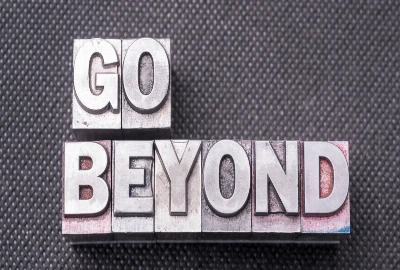Digital Grief: How We Mourn in the Age of Eternal Online Presence

The way we grieve has always been shaped by culture, ritual, and time. But in the digital era, mourning is no longer confined to physical spaces like cemeteries or memorial halls—it unfolds online, across social networks and digital archives that never forget. Digital grief describes the emotional, social, and cultural experience of mourning someone whose presence persists through technology. From Facebook memorial pages to AI “ghosts” that mimic the voices of the dead, grief has entered the virtual realm, forcing us to confront an uncomfortable truth: the internet doesn’t allow for true disappearance.
The rise of social media legacies has changed the rhythm of mourning. In the past, physical death marked an endpoint; now, it’s often a transition to a new kind of digital afterlife. We scroll through old text messages, revisit shared playlists, and tag loved ones in photos long after they’re gone. The digital self—a collection of posts, photos, and interactions—becomes a form of immortality. But this immortality comes with complex emotions. Many find comfort in revisiting a digital trace; others feel trapped by the constant reminders that the person is gone but never really gone.
In this hyper-connected world, death and mourning are public performances as much as they are private emotions. Online condolences, memorial hashtags, and tribute videos blur the line between personal grief and collective remembrance. Understanding how digital grief operates isn’t just about technology—it’s about what it means to be human when memories are archived forever.
The Digital Afterlife: How Technology Extends Our Existence

Social Media as a Modern Mausoleum
Social media platforms have become digital memorial grounds. Facebook, Instagram, TikTok, and X (formerly Twitter) all contain profiles that outlive their owners. Meta even allows families to “memorialize” accounts, keeping them visible but inactive. These spaces serve as virtual shrines, where loved ones can post memories, share photos, and express ongoing affection. It’s a way to preserve the essence of someone’s life, but it also raises questions about consent and control—who decides what happens to a person’s digital identity after death?
The Rise of AI-Driven Legacies
Advancements in artificial intelligence have taken digital remembrance a step further. AI-driven chatbots can simulate the voices, writing styles, or personalities of deceased individuals. Projects like “Replika” and “HereAfter AI” create conversational avatars that can mimic lost loved ones, offering an illusion of continued connection. While some find solace in this digital resurrection, others find it eerie or emotionally unsettling. AI memorialization blurs the boundary between grief and denial, creating a form of mourning that never fully ends.
Data Immortality and Ethical Dilemmas
Every photo uploaded, every tweet sent, and every video shared contributes to what some call data immortality—a digital footprint that outlives its creator. This phenomenon forces society to rethink death in the context of permanence. Should digital accounts be deleted, archived, or inherited? Should tech companies have the right to retain or monetize these profiles? The answers are still unfolding, but one thing is clear: the digital afterlife is now an inescapable part of human legacy.
Grieving Online: The Public Performance of Loss

Shared Mourning in a Connected World
The internet has transformed mourning from a private experience into a collective expression. When a celebrity dies, fans flood social media with tributes, hashtags, and digital art. When someone within a community passes away, Facebook timelines become virtual wakes. Public mourning helps create solidarity and visibility for grief, especially among those who might otherwise feel isolated. The comment section becomes a place of empathy—a digital candlelight vigil that never ends.
The Pressure to Perform Grief
However, digital grief can also create emotional pressure. People often feel obligated to post tributes or share memories, fearing that silence may be interpreted as indifference. The algorithms amplify emotional content, making grief not just a personal process but a form of social performance. For many, mourning online becomes a balancing act between authenticity and audience expectation.
Parasocial Grief and Celebrity Deaths
In the digital age, people form deep emotional bonds with influencers, streamers, and public figures they’ve never met. When these figures die, it sparks what psychologists call parasocial grief—mourning someone known only through screens. This kind of loss reflects how digital intimacy reshapes empathy. The grief feels real because the relationship, though one-sided, was emotionally meaningful. The line between public and private mourning has never been thinner.
The Psychology of Digital Grief

Continuous Bonds and Digital Traces
Psychologists have long recognized that grief doesn’t always end—it transforms. In digital spaces, continuous bonds with the deceased are more visible than ever. People message their loved one’s old accounts, revisit photos, or even tag them in new memories. These acts provide comfort and connection, allowing mourners to maintain relationships with those they’ve lost in new, evolving ways.
Complicated Healing in a Hyperconnected World
While digital spaces can be therapeutic, they can also prolong pain. Constant exposure to reminders—such as social media “memories” resurfacing old photos—can re-trigger emotional wounds. This digital haunting can make it difficult to find closure, as grief is perpetually refreshed by algorithms that don’t understand context or emotion.
Virtual Support Groups and Collective Healing
On the brighter side, online grief communities and forums provide essential support for those struggling alone. Digital spaces like Reddit’s r/GriefSupport or Facebook bereavement groups create networks of empathy where people share stories, coping strategies, and compassion. These spaces remind us that while loss is inevitable, connection—even through a screen—remains profoundly healing.
Ethical and Legal Questions in the Age of Digital Mourning

Who Owns the Digital Self After Death?
Digital ownership after death is one of the most pressing ethical debates of the modern era. When someone dies, their online accounts, data, and digital creations remain. Do they belong to the family, the company, or the public? Different countries are beginning to draft digital inheritance laws, but the issue remains murky. As personal data becomes a form of identity, managing digital estates is becoming as important as managing physical ones.
The Responsibility of Tech Companies
Tech giants face growing pressure to create clearer policies on memorialization, deletion, and data access. Platforms like Google’s Inactive Account Manager allow users to decide what happens to their data posthumously, but not all companies offer such transparency. The ethical challenge lies in balancing privacy with the human need for remembrance. How do we honor digital legacies without exploiting them?
Digital Death Planning and Legacy Tools
An emerging trend is digital death planning, where individuals proactively decide how their online presence should be managed. Tools like password managers, legacy contacts, and data wills ensure that one’s digital self is handled according to personal wishes. As our digital identities grow, planning for their fate becomes an essential act of self-determination.
Finding Closure: Redefining Mourning in the Digital Age

Reimagining Rituals for Virtual Spaces
Traditional rituals—funerals, memorials, wakes—are increasingly finding virtual counterparts. Livestreamed funerals, online prayer rooms, and digital tribute walls allow people from around the world to participate in collective mourning. These practices make grief more inclusive and accessible, especially in times of global crises like pandemics or wars. They reflect how mourning adapts to modern connectivity without losing its emotional depth.
Creating Healthy Digital Boundaries
For those navigating loss online, setting emotional boundaries is essential. Mourners should decide when to engage with digital memories and when to disconnect. It’s important to curate the digital space of remembrance intentionally—unfollowing triggers, disabling notifications, or archiving certain content can be powerful steps toward healing. Grief may live online, but closure still happens offline.
The Future of Grief in a Digital World
As technology continues to evolve, the line between life and afterlife will blur even further. Virtual reality memorials, AI companions, and blockchain-based memory preservation are already reshaping how we remember. The future of grief will likely be hybrid—a blend of digital permanence and human impermanence. What remains timeless is our desire to remember, connect, and find meaning in loss.




